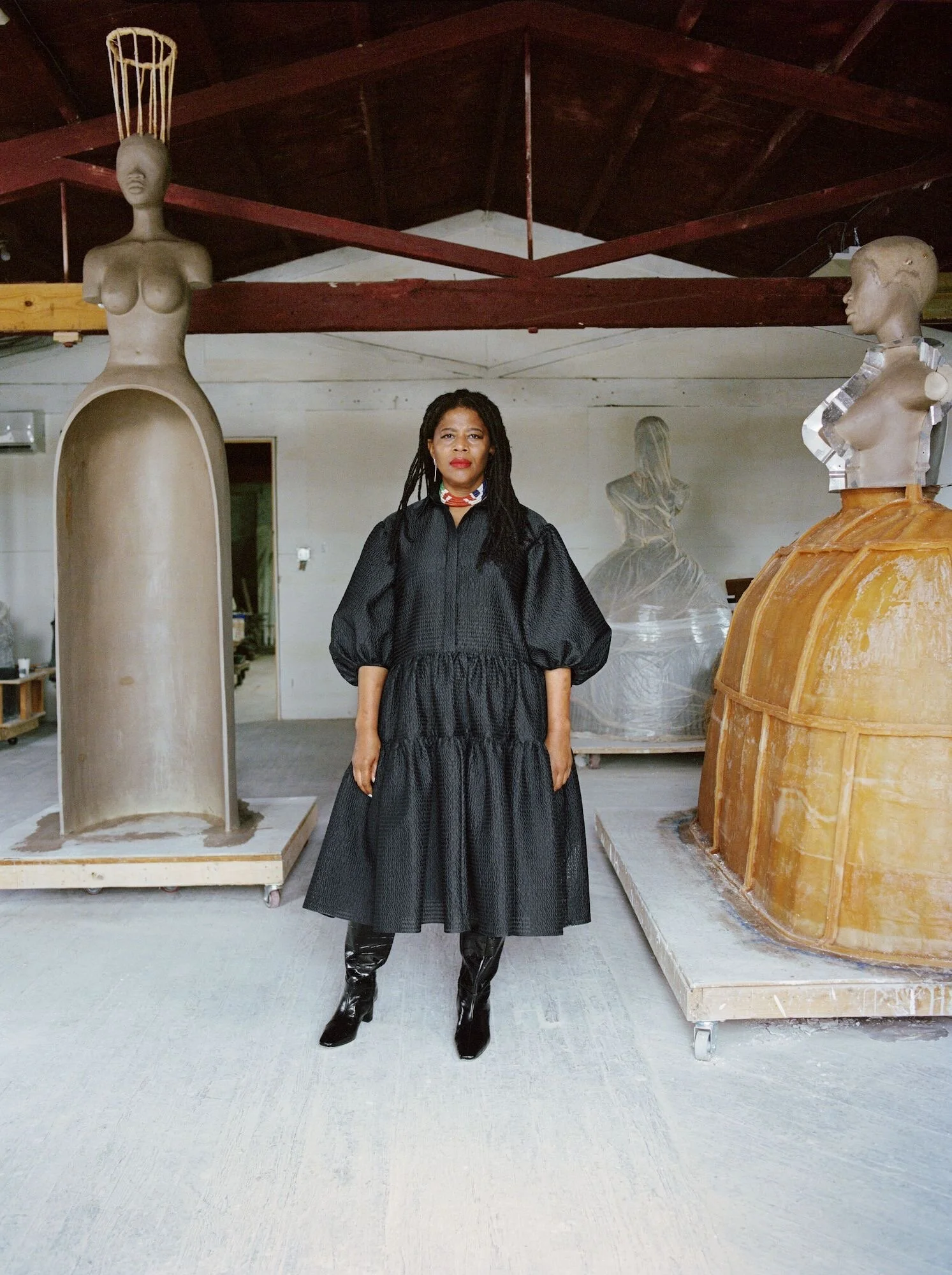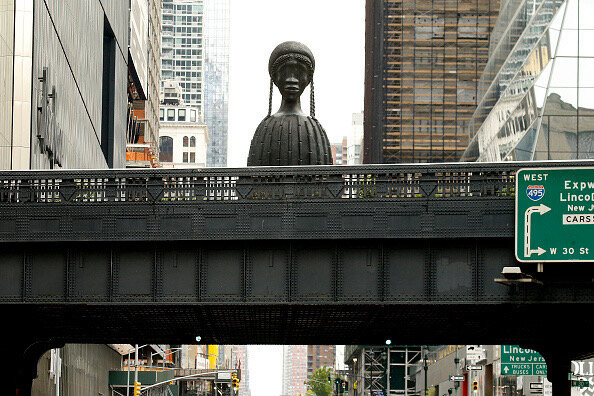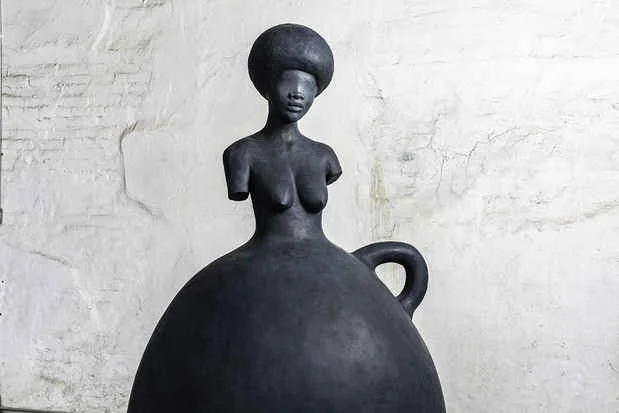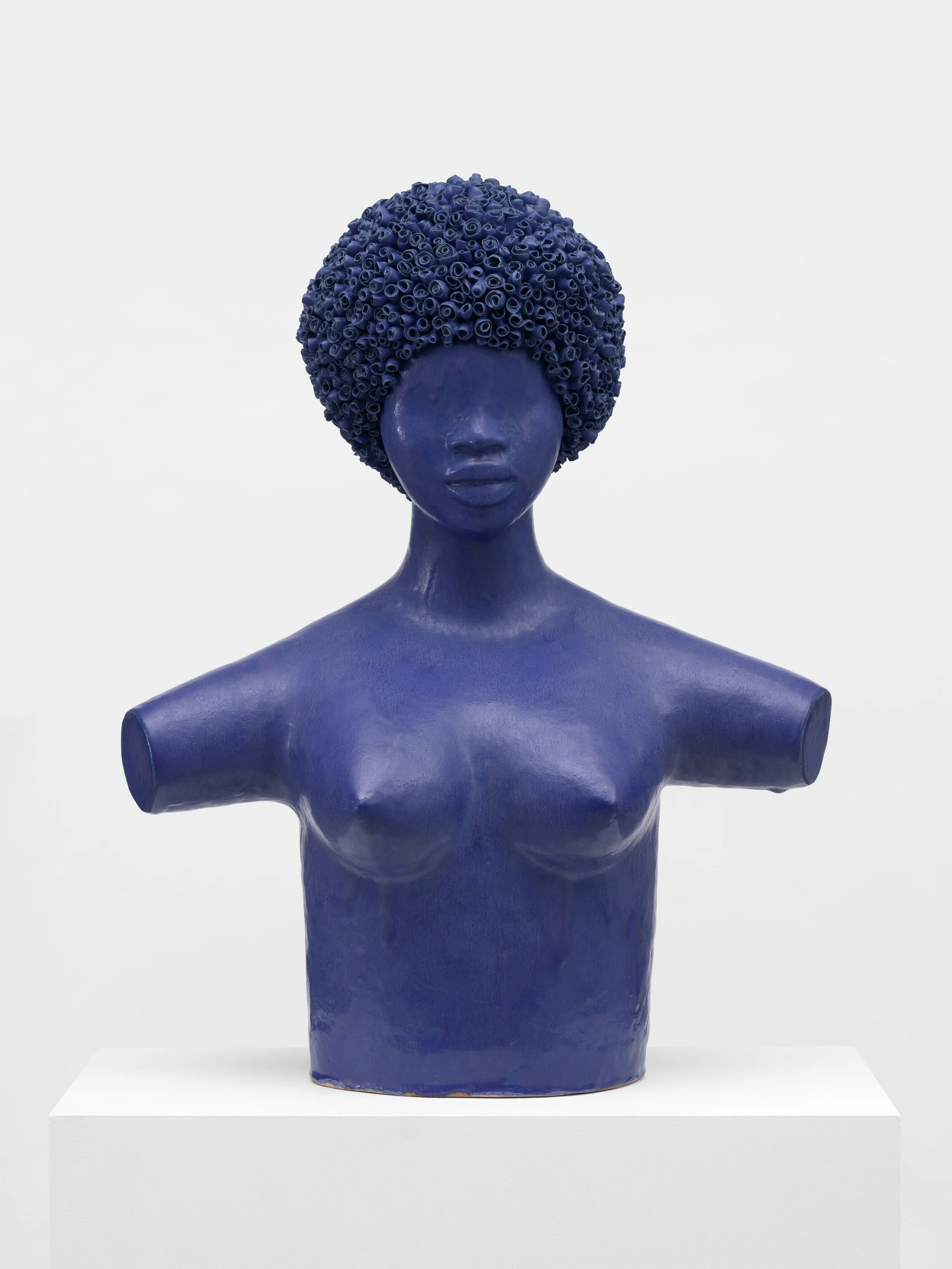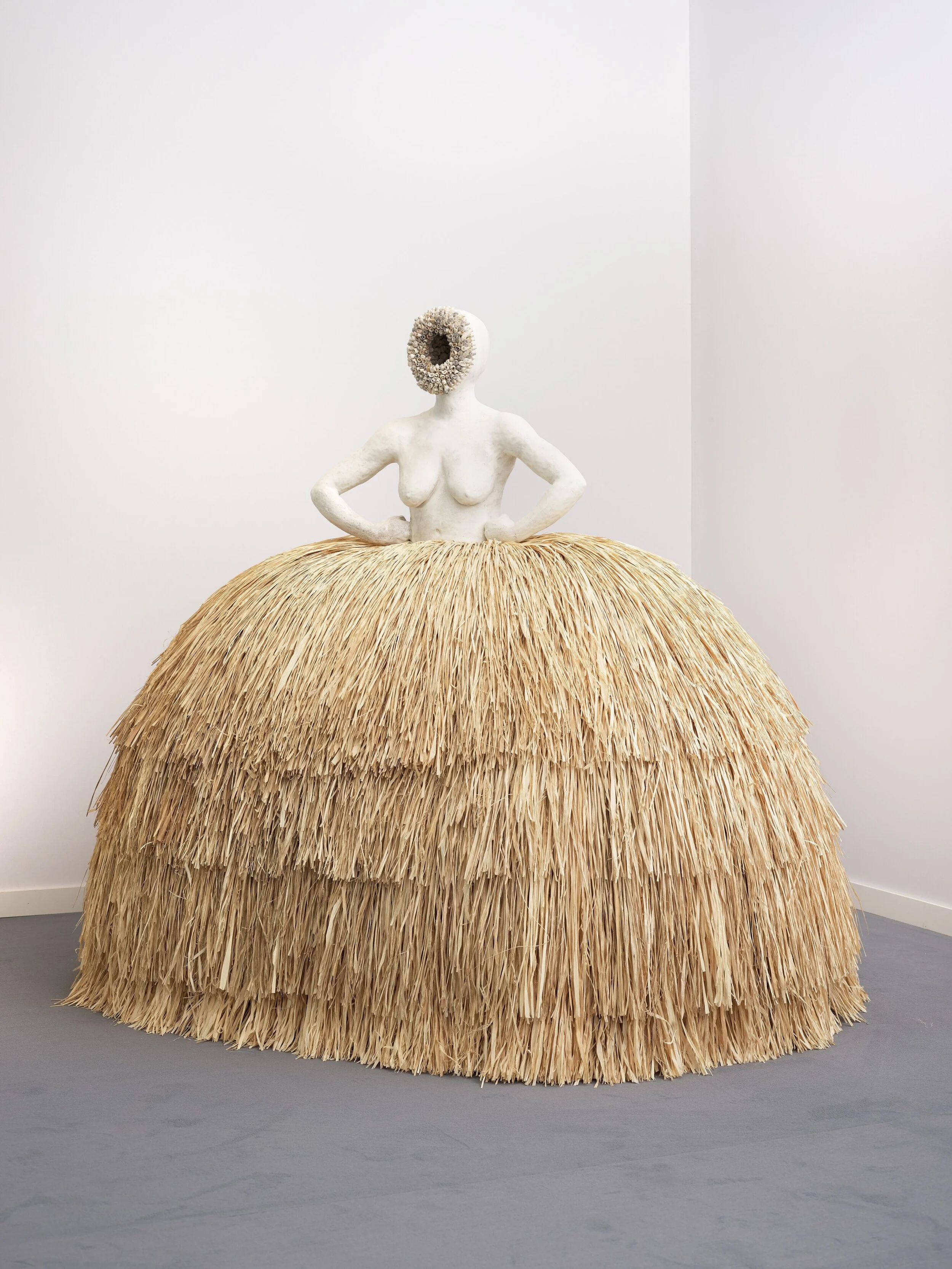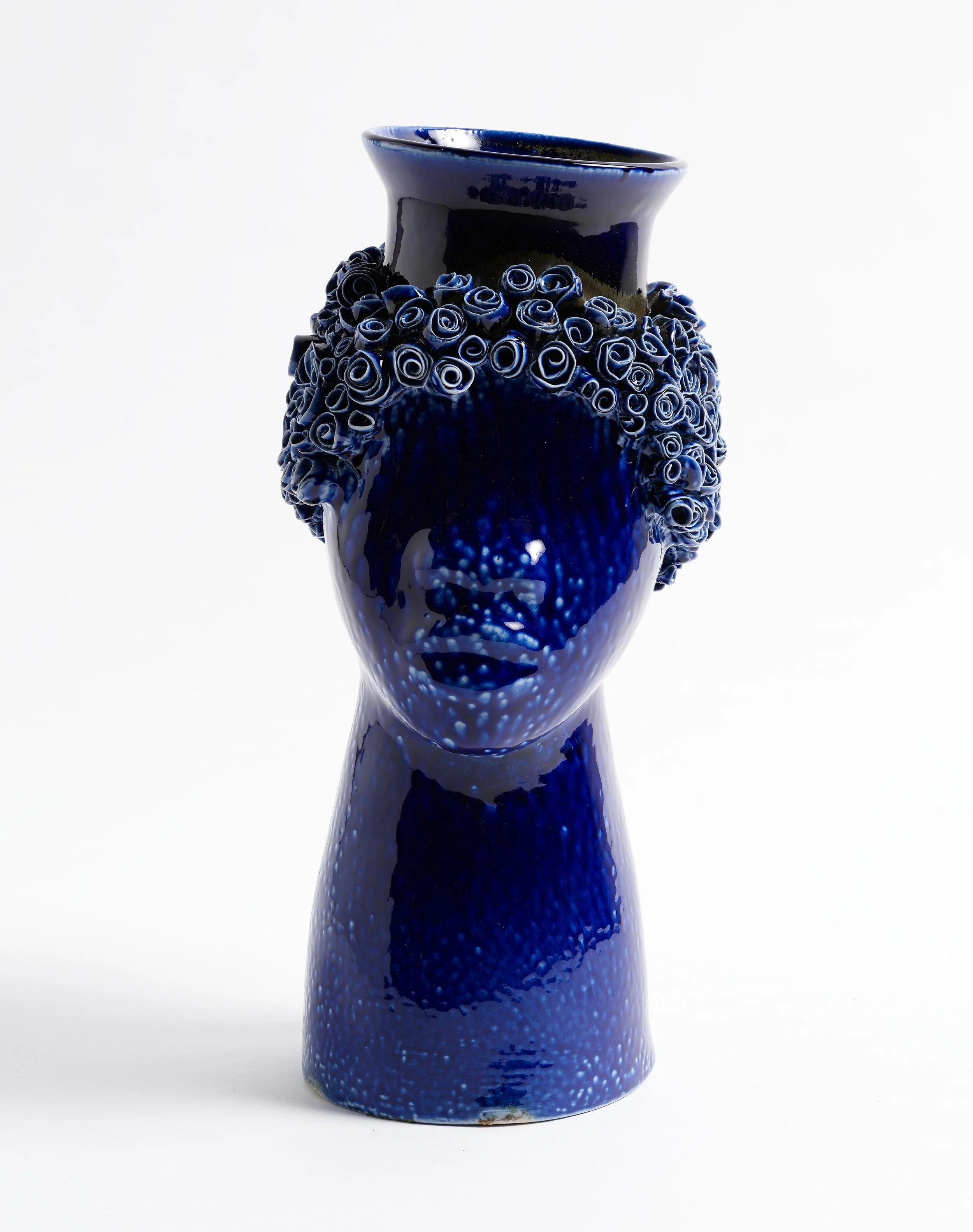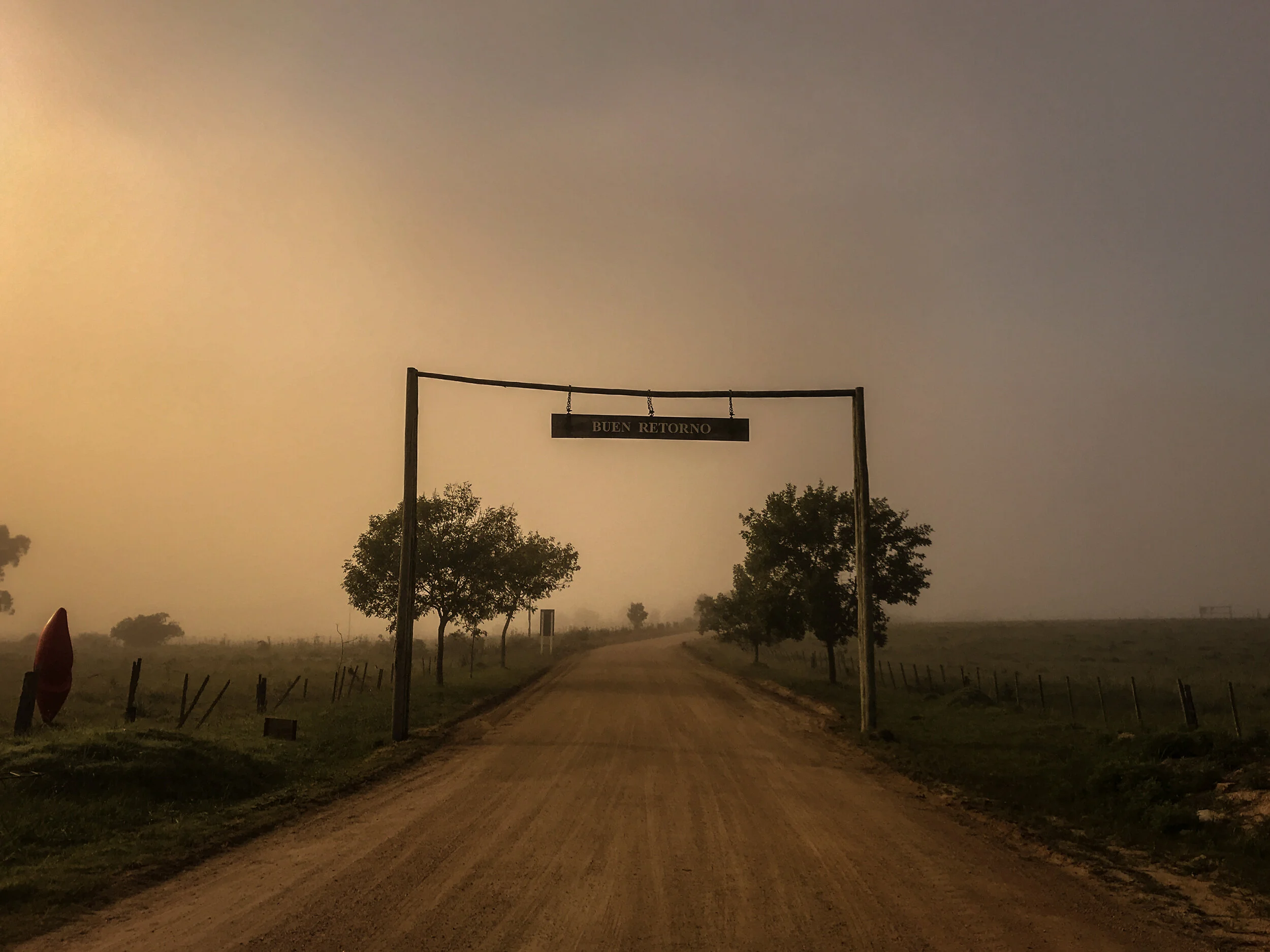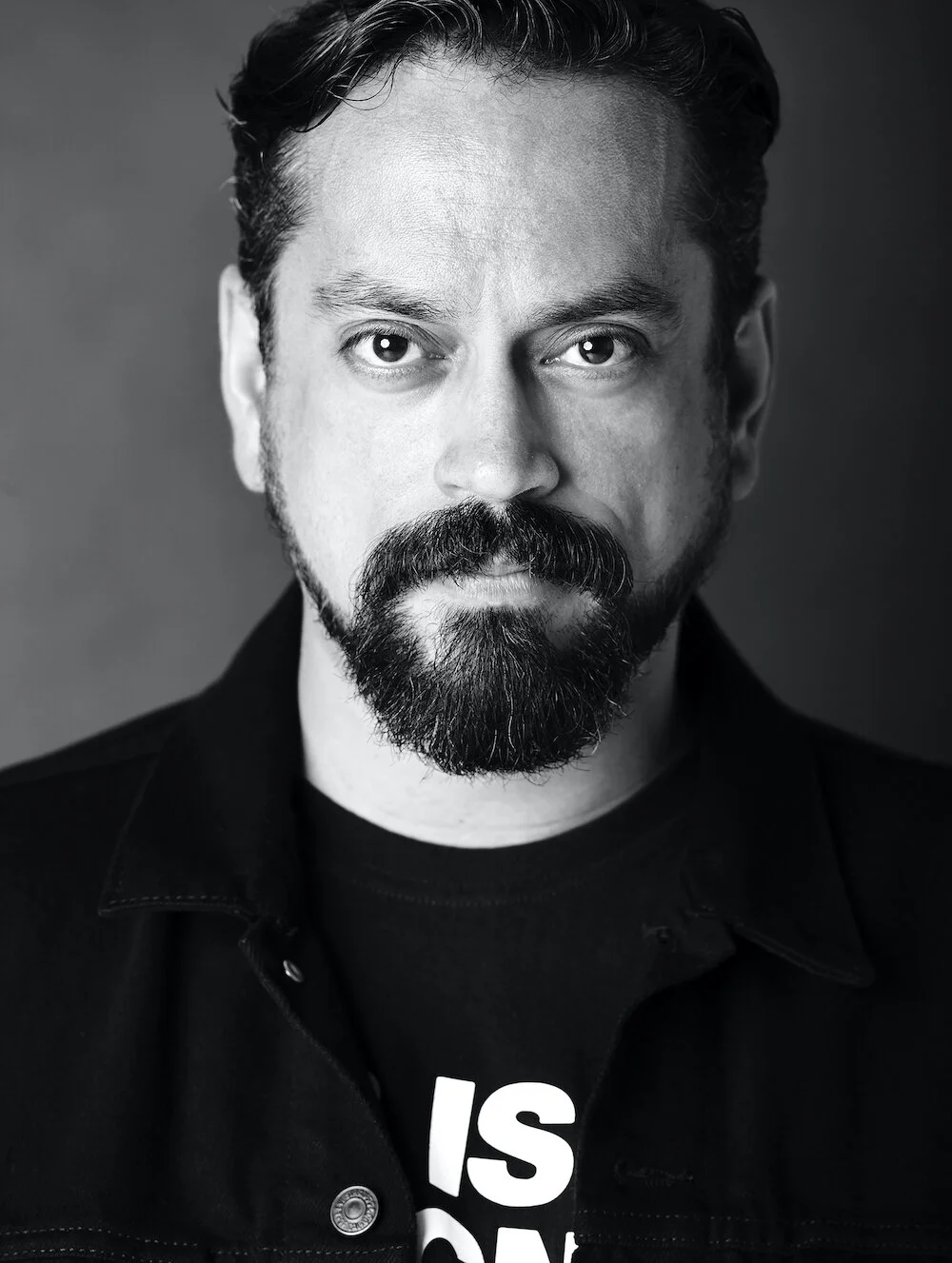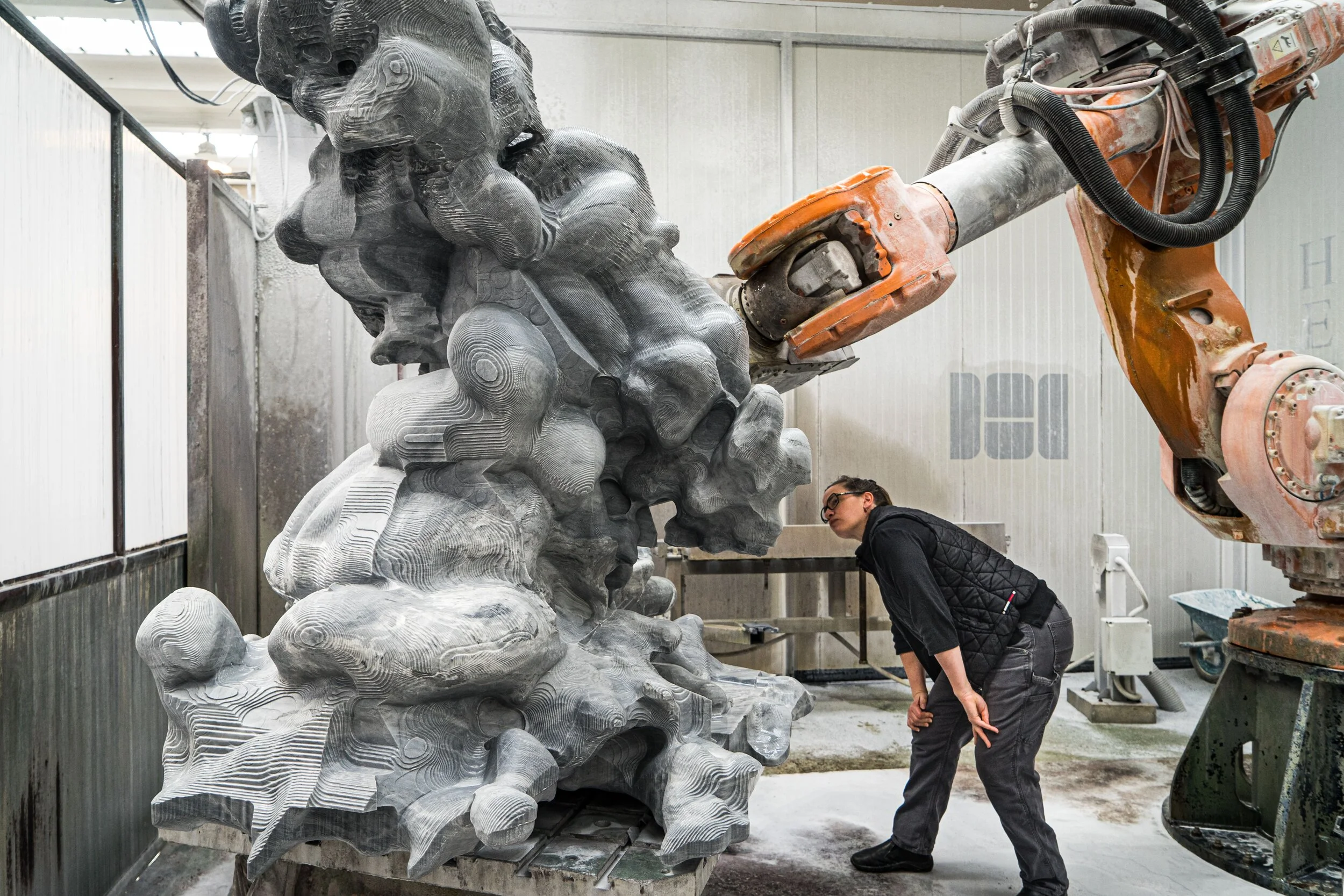She's a Goddess
I stood under her, looking up in awe. She faced outwards, daring pedestrians, traffic, birds: see me. I took in her monumentality, her blackness, her beauty. She was as strong as a skyscraper, redirecting the wind. Circling her afro sixteen feet high, a halo of cornrows dropped into braids decorated with cowrie shells. Her body, in the shape of a hut or skirt held her solidly above the banal rush of daily life. I stood under her looking up, captured by her transcendence - the power and beauty of a goddess.
Simone Leigh's Brick House. Photo by John Lamparski/Getty Images.
I was on The Spur, a crook of Manhattan’s High Line, and she was Simone Leigh’s Brick House, the first work commissioned for the High Line’s Plinth. My husband and daughter waited, looking down on Tenth Avenue.
Defiant and proud, the goddess seemed destined to inspire a future more just for Black women (and by extension all women) than the inequitable world over which she towers. Brick House is a monument to the self determination of Black women in a world of their own creation, despite historic efforts to undermine and silence them. In that way it is a culmination of the project Simone Leigh has been working on throughout her remarkable career.
Brick House’s spring 2019 installation was overseen by Cecilia Alemani, the Chief Curator of High Line Art who has been commissioning work by up and coming artists for the unique NYC space since 2011. Now as the Artistic Director of the 59th Venice Biennale she has another high profile opportunity to champion Simone Leigh’s work, along with two of the art world’s most ardent supporters of work by non-white, non-male artists: the Institute of Contemporary Art Boston’s Jill Medvedow and Eva Respini.
Last month, Medvedow, the ICA’s Director and Respini, Chief Curator, announced that the ICA had been selected as the commissioner of the 59th Venice Biennale, presenting works by Simone Leigh in cooperation with the U.S. Department of State’s Bureau of Educational and Cultural Affairs. This is enormous news for lots of reasons, but the most historic is that Leigh will be the first Black woman ever to represent the United States at the Biennale, widely considered the most influential art event in the world. At a moment when the first woman + the first woman of color has been elected Vice President of the United States, we might be guilty of believing things are looking up after four years of breath-holding.
Jug 2019 Bronze © Simone Leigh© 2019 The Solomon R. Guggenheim Foundation. Courtesy of the artist and The Solomon R. Guggenheim Foundation. Photo: David Heald
“To be the first Black American woman to occupy the American Pavilion for the 59th La Biennale di Venezia is a great honor,” Simone Leigh said in a statement. “I acknowledge the paradox of my position during this time when the depth of White supremacy in America is in full view. I also recognize that this is a time when Black artists and intellectuals of the diaspora are flourishing and have reached critical mass. My show, comprised primarily of sculpture, will engage the work of Black feminist thinkers who have enlarged and transcended the limits of this democracy.”
Leigh, whose parents are Jamaican, grew up in Chicago. At college she majored in philosophy before turning to art and says she approaches her artistic practice through the lens of cultural studies. She draws from a unique self-prescribed curriculum to produce work which emphatically centers Black female subjectivity. An internship at the Smithsonian National Museum of African Art early in her career sparked an interest in the misrepresentation and faulty categorization of artifacts from the African diaspora. She studied West African and Native American ceramic traditions which greatly influence her sculptural technique. She incorporates #ownvoices community input via her social practices and she channels ideas put forth by Black feminists and intellectuals.
Hagar 2020 © Simone Leigh. Courtesy of the artist and Hauser & Wirth. Photo: Dan Bradica.
“I just like the idea of thinking about femininity in a different way - as something solid and enduring rather than something fragile and weak.”
Simone Leigh collaborated with Zendaya for Garage Magazine.
All aspects of Leigh’s work, whether sculpture, video, or community activations, inform her primary objective to reclaim, confront and counter negative representations of Black female bodies and degrading stereotypes of Black people. As Respini explains, “Her work insists on the centrality of Black female forms within the cultural sphere, and serves as a beacon in our moment.”
By commissioning her work for the Biennale, the ICA makes clear to the world that Simone Leigh’s themes are part of the story of all Americans. And by choosing her to represent our country, the Department of State’s Bureau of Educational and Cultural Affairs acknowledges that Leigh’s work most effectively embodies this uniquely complex moment in American society, politics, culture and art.
Las Meninas, 2019. Terracotta, steel, raffia, porcelain. © Simone Leigh. Courtesy of the artist and The Cleveland Museum of Art. Photo: Farzad Owrang.
From the American Pavilion in Venice, Leigh will drive a cultural conversation about agency and authorship. “Simone’s work asks the question of whose stories are being told in what space and within what context,” explains Respini.
Leigh tells Black women’s stories and always has. She describes her work as being made for a Black female audience, an imperative Respini says will likely hold true even with new work being made for the Biennale is for a truly global audience. (The Biennale draws upwards of 500,000 visitors and will draw even more online).
No Face (House) 2020. Courtesy Private Collection. Photo: Dan Bradica.
“For the U.S. Pavilion, Leigh will create a series of new sculptures and installations that address what the artist calls an ‘incomplete archive’ of Black feminist thought, with works inspired by leading Black intellectuals.” Respini says.
By designing an academically grounded, fem-positive vernacular for her work, Leigh establishes agency despite the traditionally male dominated, euro-centric nature of the art world at large.
Asked about her unique vernacular, the artist explained her approach to CBS News, “I just like the idea of thinking about femininity in a different way, as something solid and enduring rather than something fragile and weak.”
Through the years Leigh has incorporated powerful symbolic objects and forms into her work. These include cowrie shells, raffia, jugs, huts, containers, roses and female figures. By using this vernacular she not only wrestles control and gives herself permission to speak, but gives us her version of womanhood built on the special forms and symbols which she has reclaimed and redefined.
107 (Face Jug Series) 2019. © Simone Leigh. Courtesy Private Collection. Photo: Farzad Owrang.
Leigh has always insisted on the importance of writing history with the voices of women, what she calls “viable antidotes to colonial anthropology.” In an essay she wrote entitled Everyone wants to be Subaltern, published in the Brooklyn Rail in February of 2013 she wrote, I imagine a future where auto-enthnographic initiatives documenting “local forms” of craft and vernacular knowledge would exist across the world. This archive would be accessible to artists.”
A few examples of social activations Leigh created through the years to access women’s voices, include:
Free People’s Medical Clinic, 2014: Creating a community platform for reimagining a more dignified and equitable approach to health care, Leigh programmed a series of homeopathic and allopathic services from yoga to acupuncture to dance and lectures on navigating the Affordable Care Act and HIV. Always aware of the importance of place and context, Leigh housed the events at Stuyvesant Mansion, former home of Dr. Josephine English the first black, female OB/GYN in New York State
Black Women Artists for Black Lives Matter (BWA for BLM), 2016: During a residency at NYC’s New Museum in 2016 Leigh exhibited The Waiting Room exploring rebellion and collective action against the socially required patience and acceptance of inadequate health care by marginalized communities in the US. For an entire day during the run of the show she organized 100 female artists to do a takeover of the museum. Programs included healing workshops, performances, digital works and the distribution of materials.
Loophole of Retreat, 2018: In conjunction with her exhibition on the occasion of being awarded the Guggenheim’s Hugo Boss award, Leigh collaborated with poets, scholars and artists on a lecture series named after the poet Harriet Jacobs’ account Incidents in the life of a Slave Girl.
In imagining the exhibition for the 2022 Biennale Leigh and the ICA took this practice even a step further. Together the artist and institution are creating mentorship opportunities for students via a collaboration with Spelman College’s Curatorial Studies program. In doing so they will be helping to inspire and train a future generation of art professionals who will continue Leigh’s project of centering black bodies and black history in art and civic life. Both the artist and the museum have stated that this is one of the most exciting aspects of the commission and an element that set the proposal apart from others submitted for the Bienniale.
In 2020, the character of the United States has been tested both at home and abroad. Art gives the world a lens through which to understand our true soul, through our people and traditions, rather than the bluster of political figures. As the artist wrote in her 2013 essay Everyone wants to be Subaltern, “All work is about identity.” Leigh’s bold, beautiful sculpture reframes the identity of our country, giving us beauty and hope during especially fractured times.
Works created for the Biennale will return to Boston and be included in Leigh’s first survey exhibition, being organized by Medvedow and Respini and the ICA. This show, which will also include a major monograph will open in Boston in 2023.
The 59th edition of the Venice Biennale will run from April 23 to November 27, 2022.
For a full list of artists who will show at the 59th Venice Biennale, click here.
Cover image: Simone Leigh photographed in her studio, 2020. © Simone Leigh. Courtesy of the artist and Hauser & Wirth. Photo credit: Shaniqwa Jarvis


